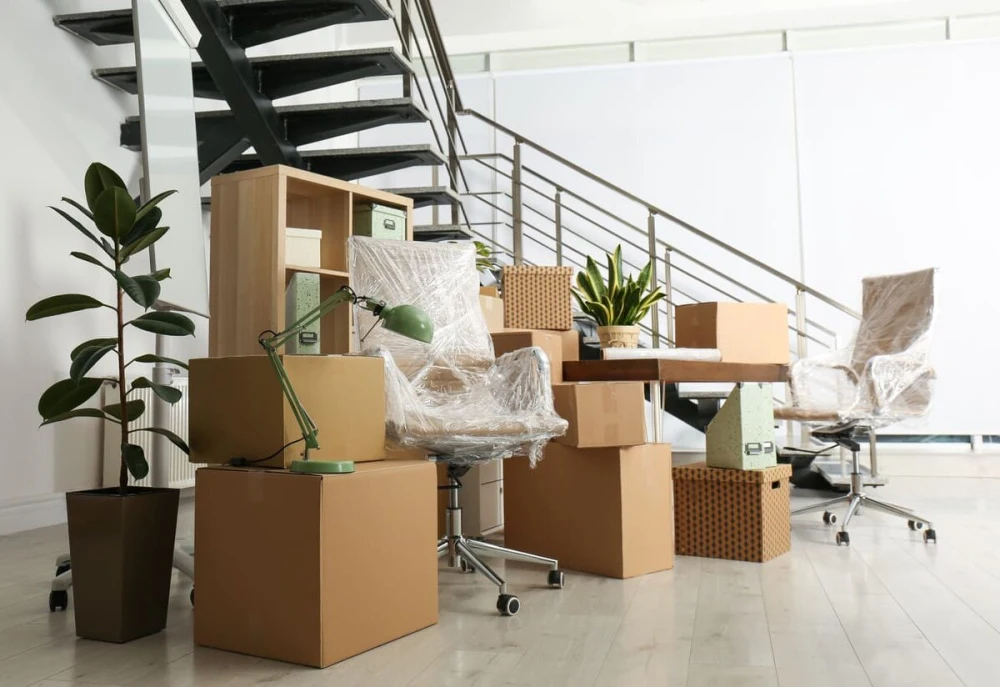Storing furniture for the long term requires more than just space — it demands careful preparation, especially if you’re using a climate-controlled storage unit. These specialized units help protect your belongings from temperature fluctuations, humidity, and moisture damage. But even with such facilities, knowing how to pack furniture for climate-controlled storage properly is key to preserving quality and longevity.
This comprehensive guide will show you exactly how to do it, step by step.
Why Choose Climate-Controlled Storage for Furniture?
Before diving into how to pack furniture for climate-controlled storage, it’s essential to understand why this type of storage is ideal for wooden, leather, and upholstered furniture.H3: Protection from Temperature Extremes
Climate-controlled storage units maintain a consistent environment, protecting furniture from warping, cracking, or mold due to extreme heat or cold.H3: Moisture and Humidity Control
Humidity is one of the main culprits behind mold growth, wood expansion, and mildew on fabric. Climate control regulates humidity to prevent these issues.
Added Security and Cleanliness
Most climate-controlled units are located indoors, offering an extra layer of protection from pests, dust, and dirt.
How to Pack Furniture for Climate-Controlled Storage: Step-by-Step Instructions
Let’s explore the full process of how to pack furniture for climate-controlled storage, from cleaning and disassembling to wrapping and organizing your unit.
Step 1 – Clean and Dry Everything Thoroughly
Before packing, ensure all furniture is clean and completely dry. Dirt, moisture, or leftover food particles can lead to stains, mold, or unpleasant odors.
-
Wooden furniture: Use a gentle wood cleaner and let it air dry.
-
Upholstered furniture: Vacuum cushions and clean fabric with appropriate cleaners.
-
Leather furniture: Wipe down with a leather-safe solution and conditioner.
Cleaning is the foundation of how to pack furniture for climate-controlled storage safely and hygienically.
Step 2 – Disassemble Large Pieces
Take apart large furniture items such as beds, dining tables, or shelves to make them easier to transport and store.
-
Label each part and keep screws/bolts in labeled bags.
-
Wrap table legs and smaller pieces individually.
-
Removing legs from couches or tables reduces the risk of damage.
This step makes how to pack furniture for climate-controlled storage more efficient and helps maximize your space.
Step 3 – Wrap Furniture in Protective Materials
Use the right materials to protect your items from scratches, dust, and dents.
-
Furniture blankets or moving pads: Wrap wooden surfaces and delicate pieces.
-
Plastic stretch wrap: Good for securing cushions and protecting fabrics.
-
Bubble wrap: Ideal for fragile items like glass components.
-
Avoid using thick plastic directly on wood or leather, as it can trap moisture.
Proper wrapping is essential in how to pack furniture for climate-controlled storage to prevent wear and tear.
Step 4 – Use Protective Covers for Long-Term Storage
Furniture covers or cloth sheets allow air circulation while protecting from dust.
-
Avoid plastic sheeting for extended periods.
-
Choose breathable covers to prevent condensation buildup.
-
Cover couches, mattresses, and chairs loosely for airflow.
This step is especially important in long-term strategies for how to pack furniture for climate-controlled storage correctly.
Step 5 – Organize Your Storage Unit Strategically
Smart organization can reduce damage and make it easier to retrieve items later.
-
Place larger furniture in the back.
-
Store items vertically when possible (e.g., mattresses on their side).
-
Leave space between items for air circulation.
-
Avoid stacking heavy items on delicate furniture.
Tips to Maintain Furniture in Climate-Controlled Storage
Even after your furniture is packed and stored, ongoing care ensures long-term preservation.
Visit the Unit Occasionally
Check on your items every few months to ensure everything is in good condition.
Keep Furniture Off the Floor
Place items on wooden pallets or boards to allow airflow beneath and prevent contact with potential floor moisture.
Avoid Overpacking
Too many items in one unit can cause pressure damage or prevent airflow — both problems even in climate-controlled units.
Common Mistakes to Avoid
When learning how to pack furniture for climate-controlled storage, be aware of these common errors:
-
Using non-breathable plastic wrap for long-term storage
-
Skipping the cleaning process before storing
-
Over-tightening stretch wrap or tape
-
Storing items directly on concrete floors
-
Ignoring regular unit inspections
Avoiding these mistakes ensures you truly benefit from the climate-controlled environment.
Frequently Asked Questions
Q: Is it necessary to wrap furniture in a climate-controlled unit?
A: Yes, wrapping adds protection from dust, scratches, and incidental damage.
Q: How long can you store furniture in climate-controlled storage?
A: With proper preparation, you can safely store furniture for months or even years.
Q: What is the ideal temperature for storing furniture?
A: Most climate-controlled units maintain temperatures between 55–85°F (13–29°C), ideal for most materials.
Final Thoughts
Now that you understand how to pack furniture for climate-controlled storage, you can take the right steps to protect your valuable pieces for the long term. From cleaning and disassembling to wrapping and organizing, each step plays a crucial role in maintaining the integrity of your furniture.
Whether you’re moving, downsizing, or storing seasonal pieces, mastering how to pack furniture for climate-controlled storage ensures peace of mind and lasting preservation.

